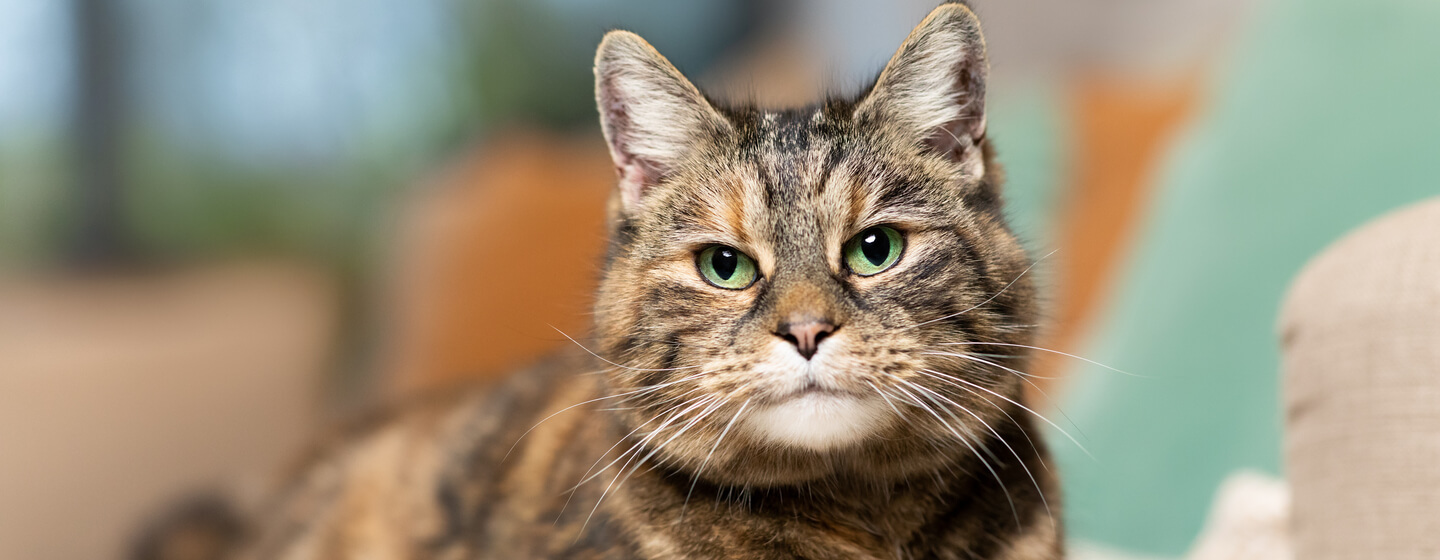Introduction
Have you seen a tortoiseshell cat’s mesmerizing eyes? This cat’s coat is a painter’s masterpiece of ebony black, flaming orange, and deep chocolate brown. Tortoiseshell cats have bi-colored coats like tortoises. These colorful cats, known as “torties,” are popular pets. The first thing people notice about your cat is its unique coat. How did they evolve such beautiful markings?
History Of Tortoiseshell Cat Breed
The history of tortoiseshell cats is an enigmatic conundrum that has confounded feline enthusiasts for eons. Yet, amidst the shadows of this perplexing mystery, one thing is glaringly lucid – these exquisite creatures have been cherished companions for centuries. It is said that the first documented mention of a tortoiseshell cat dates back to 1684, in a letter penned by the illustrious French poet Père Bougeant. In this letter, Bougeant waxes poetic about a sublime tortoiseshell feline named Minette, who was the beloved companion of his patron, the renowned Madame Scarron.
One of the most legendary tortoiseshell cats in history was the regal Tama, a feline that rose to fame in Japan during the early 2000s. This magnificent creature was appointed the honorary position of stationmaster at a train station in a rural town, quickly captivating the hearts of the local populace and garnering attention from tourists worldwide. Tama’s reign as stationmaster came to an end in 2015, but her legacy persists as an eternal testament to the boundless popularity of tortoiseshell cats.
Despite their longstanding popularity, tortoiseshell cats remain a peculiar anomaly in the feline world, as they are not considered to be a specific breed. Rather, their distinctive coloration can be found in numerous feline families, rendering them a truly unparalleled and exceptional feline treasure.

Physical Traits Of Tortoiseshell Cat Breed
“Torties,” or tortoiseshell cats, are a feline breed with a stunning appearance and many unique physical qualities. Depending on their genetics, Torties’ appearances vary widely. The Tortie’s coat pattern stands out. Torties’ coats are mottled or brindled, with black, orange, and sometimes white fur merging together in a tortoiseshell pattern. Each cat’s coat markings are unique like a fingerprint.
Torties are intriguing due to their triangular head form and huge, wide-set eyes. Furry ears add to their unique appearance. Torties have short, medium, or long fur, depending on breed and genetics. Tortoiseshell cats range from little to large and thin to stocky. Torties’ muscular physique and back arches give them grace and agility. Their strong, nimble legs allow them to leap enormous distances.
Despite their odd appearance, Torties are healthy and strong cats. They often live into their late teens or early twenties. Tortoiseshell cats have unique coat patterns, triangular skulls, and strong physiques. Their unique appearance and kind nature make them a favorite among feline lovers worldwide.
Temperament Evaluation Of Tortoiseshell Cat Breed
“Torties,” or tortoiseshell cats, are noted for their engaging personality and unique physical features. Their temperament combines traits from both parent breeds. They are fun, active, and affectionate, but also independent and sassy. Torties love meowing, chirping, and purring to communicate with their owners. They’re also noted for their expressive body language. They may quiver their tail when annoyed, arch their back when defensive, or knead with their paws when delighted.
Torties can be affectionate with their owners despite their stubbornness. They like to hug and be held. They are extremely faithful and protective of their human friends, following them around the house to keep a watch on them. Torties are playful and active, and they love to explore. Curiosity drives them to explore their home. They adore toys, especially ones that require chasing, swatting, or pouncing.
Tortoiseshell cats have a charming mix of sass, independence, playfulness, and affection. Their loyalty and protectiveness make them great companions, and their vocalizations and body language are interesting. A tortie may be the perfect pet if you want a lively cat!

Tortoiseshell Cat Breed’s General Health
Tortoiseshell cats, or “torties,” are prized for their beautiful coat pattern and unique appearance. These gorgeous cats are healthy but not invincible. Let’s explore tortoiseshell cats’ health issues.
Torties often have dental difficulties. These cats are genetically susceptible to tooth decay and gum disease from tartar and plaque buildup. Regular veterinary visits and brushing and treating your cat’s teeth can prevent these concerns. Tortoiseshell cats also struggle with obesity. Overeating, lack of exercise, and heredity can lead to obesity and health issues. Diabetes, heart disease, and joint problems. Monitor your cat’s weight and provide a balanced diet and plenty of exercise and play to prevent these illnesses.
Tortoiseshell cats, especially females, have urinary tract difficulties. Stress, nutrition, and illnesses can cause this. Frequent, painful, and bloody urination are symptoms. If you see these signs, see a vet immediately. Tortoiseshell cats are generally healthy but can have health difficulties. Torties can have long and happy lives with adequate care, including regular veterinary checks and oral cleanliness. To prevent obesity, watch your cat’s weight and encourage exercise and play, and immediately seek veterinary care for urinary tract concerns.
Conclusion
In conclusion, tortoiseshell cats have a beautiful coat pattern, triangular head forms, and strong frames. Cat lovers worldwide love their unique appearance and attractive personality. Torties can live long, healthy lives and bring joy and companionship to humans with adequate care.
hey we have a lot of information on cats you can check out by clicking Bristhorthair.com
wants to follow us on social media
1. What is the average lifespan of the Tortoise Shell Cat Breed?
Tortoise Shell Cats, or torties, live 12-16 years. Some torties live into their 20s with adequate care.
2. Can male tortoiseshell cats exist?
It’s rare. Male tortoiseshell cats are sterile because they have an extra X chromosome.

